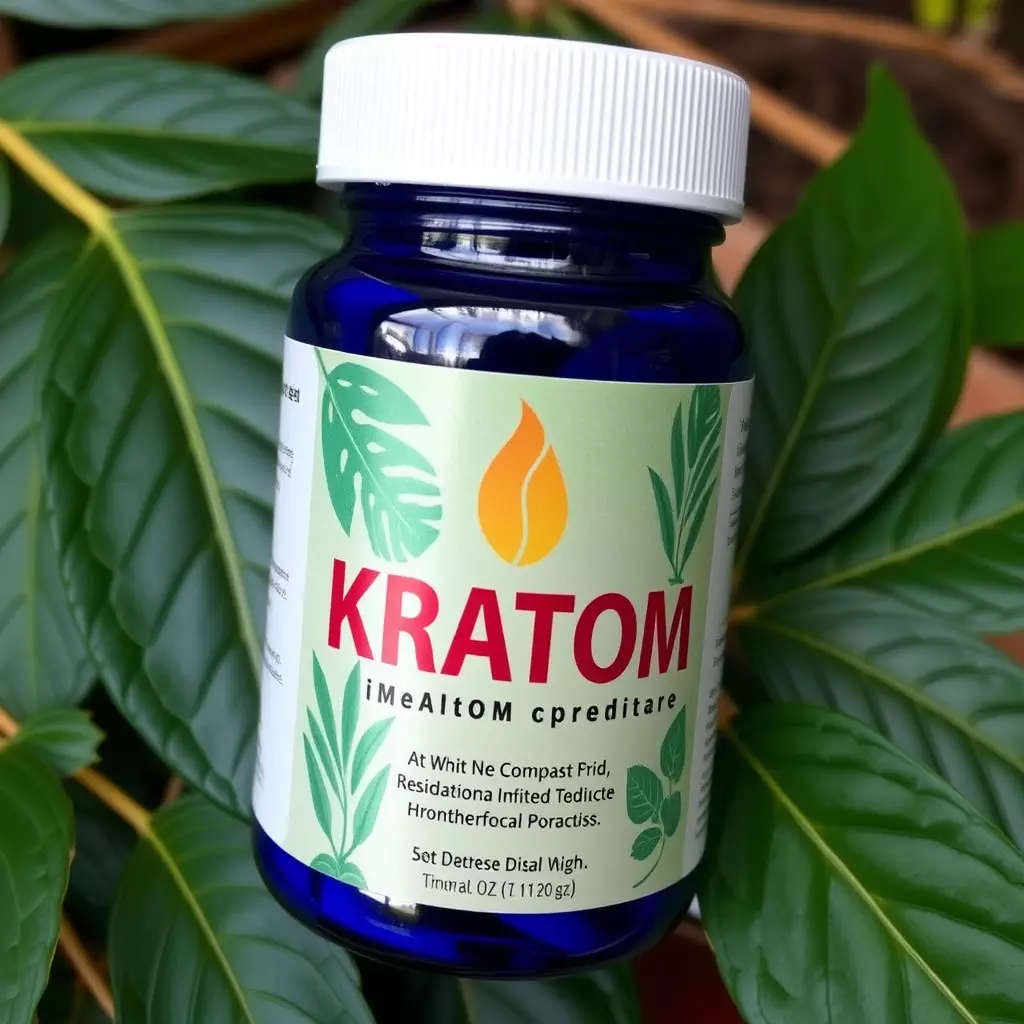The live kratom plant, native to Southeast Asia and a source of unique alkaloids like mitragynine and 7-hydroxymitragynine, has been studied for its potential role in managing chronic pain. These compounds are believed to work by engaging with brain opioid receptors, similar to traditional opioids, offering both pain relief and mood enhancement effects, which are currently under investigation through clinical studies. Users often report positive experiences with the live plant's ability to alleviate conditions like neuropathic and musculoskeletal pain, suggesting its effectiveness as a natural analgesic. The distinct composition of the live kratom plant, when compared to powdered forms, may contribute to its holistic effects. However, it's crucial for individuals to consult medical professionals before incorporating kratom into their health regimen due to varying safety and legal statuses across regions. Ongoing research aims to clarify the mechanisms by which the live kratom plant influences neurotransmitter systems and its potential as an alternative or complementary treatment for chronic pain conditions.
explore the therapeutic potential of the live kratom plant as a natural approach for chronic pain management. This article delves into the active compounds within kratom, elucidating their mechanisms in easing persistent discomfort. By examining clinical studies and real-life user experiences, we will scrutinize the scientific basis for integrating kratom into chronic pain treatment regimens. Join us as we uncover the role this botanical substance plays in the realm of pain relief.
- Exploring the Potential of the Live Kratom Plant in Managing Chronic Pain
- Understanding Kratom's Active Compounds and Their Role in Pain Alleviation
- The Science Behind Kratom for Chronic Pain Management: A Closer Look at Clinical Studies and User Experiences
Exploring the Potential of the Live Kratom Plant in Managing Chronic Pain

The live kratom plant has garnered attention in the realm of chronic pain management due to its unique alkaloid profile, which is believed to interact with the body’s pain receptors. Kratom, originating from the Mitragyna speciosa tree native to Southeast Asia, contains compounds such as mitragynine and 7-hydroxymitragynine that may provide analgesic effects. These active ingredients have been studied for their potential to alleviate various types of chronic pain, including neuropathic and inflammatory pain conditions. The efficacy of the live kratom plant in managing chronic pain is attributed not only to its chemical constituents but also to its ability to modulate neurotransmitter levels within the central nervous system, which can influence both pain perception and mood.
Users who opt for the live kratom plant typically consume it as a leaf, either by chewing or brewing it into a tea. This method of consumption is believed to offer a more natural and potentially more balanced effect compared to extracted alkaloids or kratom powder, as it provides all the components of the plant in their natural state. Proponents argue that the live plant may provide a gentler, yet still effective, approach to pain management, with fewer side effects than some pharmaceutical options. However, it is crucial for individuals to consult healthcare professionals before incorporating kratom into their pain management regimen, as the safety and legality of kratom use vary by region and are subjects of ongoing debate and research.
Understanding Kratom's Active Compounds and Their Role in Pain Alleviation

Kratom, a tropical deciduous tree native to Southeast Asia, has been traditionally used for its stimulant and sedative properties, particularly in pain management. The live kratom plant contains a complex blend of over forty compounds known as alkaloids, which are responsible for its wide range of effects. Among these alkaloids, mitragynine and 7-hydroxymitragynine are the most prominent and well-researched active components. These two alkaloids have been shown to interact with various receptors in the brain involved in pain processing, including opioid receptors. Mitragynine, the primary alkaloid found in the leaves of the kratom plant, exhibits mu-opioid receptor agonist properties similar to morphine, which can help alleviate chronic pain. On the other hand, 7-hydroxymitragynine is believed to be more potent than mitragynine and has a higher binding affinity for these receptors, contributing to its analgesic effects. The synergistic action of these compounds in the live kratom plant may help to manage chronic pain by modulating neurotransmitter systems such as GABA, norepinephrine, and dopamine, which can influence the body’s perception and response to pain. Understanding the role of these active compounds is crucial for comprehending how kratom might be utilized in pain management strategies, potentially offering an alternative or adjunct to traditional pharmaceuticals for individuals suffering from chronic pain conditions.
The Science Behind Kratom for Chronic Pain Management: A Closer Look at Clinical Studies and User Experiences

Kratom, a tropical deciduous tree native to Southeast Asia, has garnered attention in the realm of natural pain management due to its alkaloid profile, which includes mitragynine and 7-hydroxymitragynine. These compounds are believed to interact with opioid receptors in the brain, offering both pain relief and mood elevation. Clinical studies have been conducted to scrutinize these effects, providing insights into kratom’s potential for chronic pain management. While empirical evidence is still emerging, preliminary findings suggest that kratom may offer significant analgesic properties.
The scientific community’s investigation into kratom’s efficacy involves not only clinical trials but also a careful examination of user experiences. Patients suffering from various forms of chronic pain, such as neuropathic or musculoskeletal disorders, have reported positive outcomes following the use of kratom. These anecdotal reports, when combined with clinical data, contribute to a more holistic understanding of kratom’s impact on pain. Additionally, observing the live kratom plant in its natural setting and understanding its cultivation and maintenance can offer further context into how these alkaloids come to be and why the plant’s characteristics play a crucial role in its medicinal properties. This hands-on approach complements the scientific analysis, offering a comprehensive view of kratom as a potential natural alternative for managing chronic pain.
In conclusion, the potential of the live kratom plant as a natural alternative for chronic pain management has garnered significant attention. The active compounds within kratom have been identified and are believed to play a pivotal role in alleviating pain, as evidenced by both clinical studies and user experiences. A thorough examination of the scientific evidence surrounding kratom’s efficacy points to promising outcomes for those suffering from chronic discomfort. As with any therapeutic approach, it is crucial to consult healthcare professionals when considering integrating the live kratom plant into a pain management regimen. With ongoing research and a deeper understanding of its mechanisms, kratom may emerge as a valuable option in the multifaceted field of chronic pain treatment.






